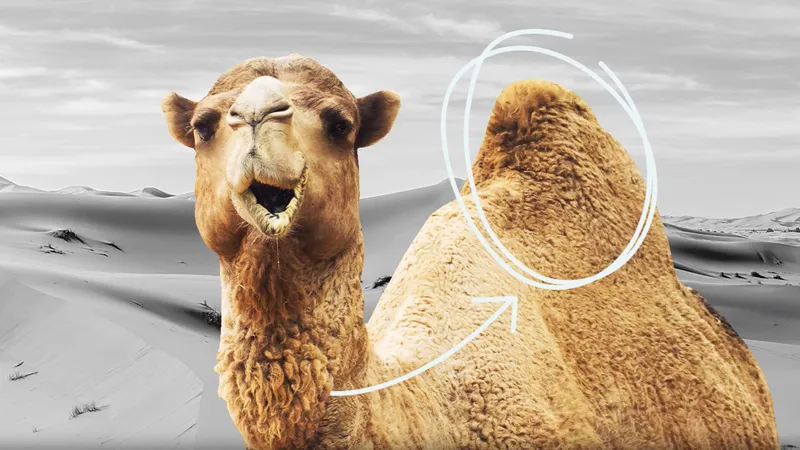How Camels Store Water: Uncovering the Secrets of Their Survival
How Do Camels Store Water?

Camels are renowned for their ability to survive long periods in harsh desert conditions without water. But how exactly do camels manage to store water, and what makes them such efficient survivors in arid environments? Contrary to popular belief, camels don’t actually store water in their humps. The real secret lies in their physiology, which allows them to manage water efficiently.
1. The Water Retention Myth: No, It’s Not in the Hump
Many people assume that camels store water in their humps, but the hump is actually a storage place for fat. This fat serves as an energy reserve that camels can metabolize when food is scarce. While fat metabolism does produce some water, the hump isn’t a direct water tank. Instead, camels rely on other remarkable adaptations to manage water.
2. Incredible Water Efficiency
Camels are masters of water conservation. Their bodies are designed to lose minimal water through sweat and urination, allowing them to survive for up to two weeks without drinking. When camels do find water, they can drink up to 40 gallons in one go! Their bodies then store this water efficiently, allowing it to be slowly used over time.
“Camels can rehydrate faster than any other mammal, drinking up to 40 gallons in one session without risking water intoxication.” – National Geographic
3. The Camel’s Red Blood Cells: Built for Survival
One of the key adaptations that allows camels to store water efficiently is the structure of their red blood cells. Camels have uniquely shaped oval red blood cells, which allows them to flow more easily even when the animal is dehydrated. These cells are also incredibly elastic, meaning they can expand up to 240% their normal size when the camel drinks water, without rupturing.
4. Nasal Passages: Water Recovery in Every Breath
Another fascinating water-saving adaptation is in the camel’s nasal passages. When camels exhale, their nasal passages cool the air and condense water vapor, which is then reabsorbed back into the body. This process prevents unnecessary water loss and helps camels stay hydrated for longer periods.
“Camels’ ability to minimize water loss through respiration is one of their most efficient adaptations, allowing them to conserve moisture in the harsh desert heat.” – BBC Earth
5. Body Temperature Control
Camels have an extraordinary ability to manage their body temperature, which helps conserve water. Unlike humans, who sweat to cool down, camels allow their body temperature to rise during the day and cool down at night, reducing the need for sweating. This allows them to avoid water loss through sweat during the hottest parts of the day.
6. The Role of Fat in the Hump
While camels don’t store water directly in their humps, the fat stored there plays a critical role in survival. When food and water are scarce, camels can metabolize this fat into energy and water. This is why a camel’s hump shrinks and droops when it hasn’t eaten for a long period.
Conclusion
Camels are uniquely adapted to survive in the desert through efficient water management, specialized blood cells, nasal passages that reduce water loss, and temperature regulation. While their humps store fat, not water, these incredible animals are truly nature’s survival experts.
References
comments powered by Disqus